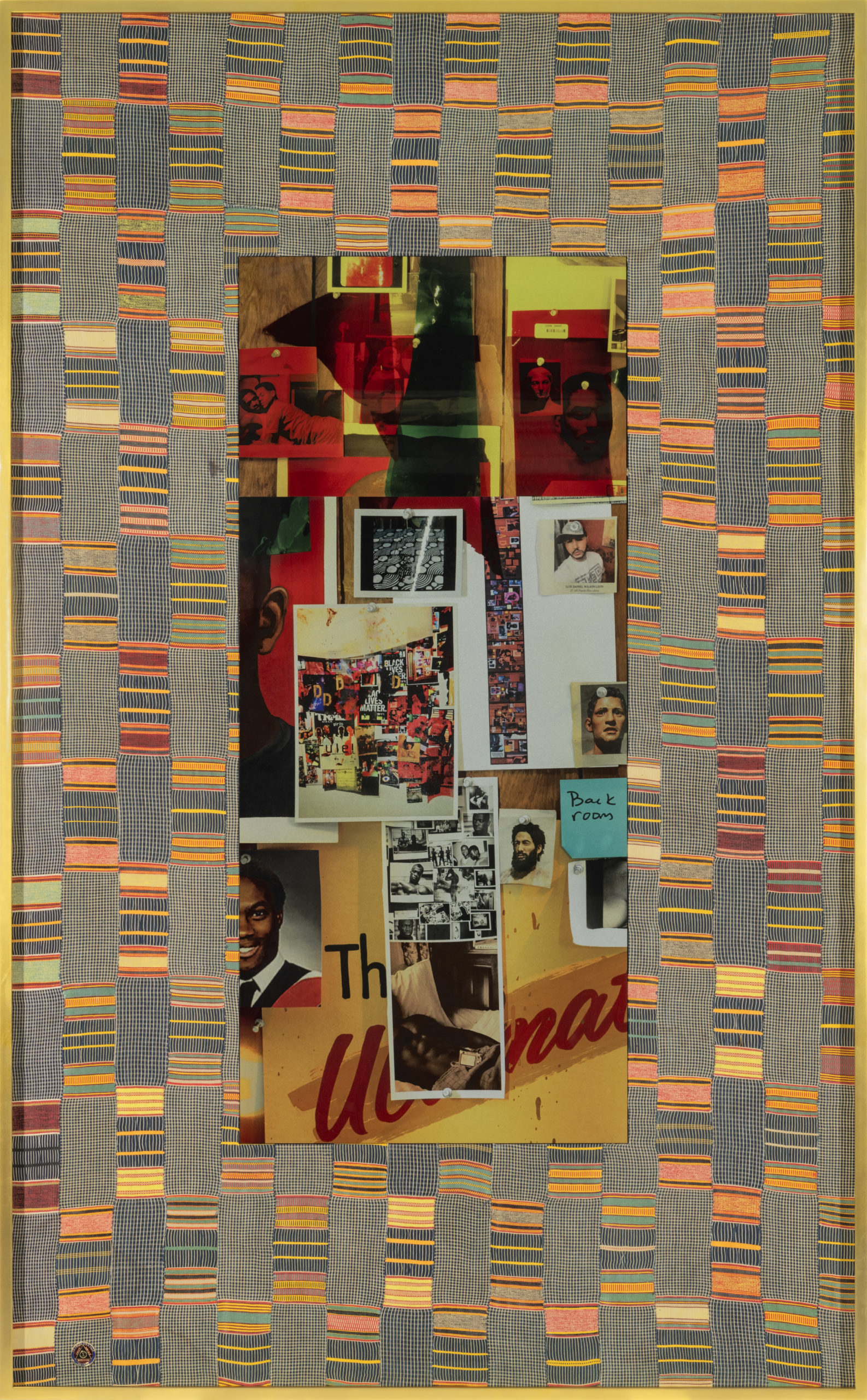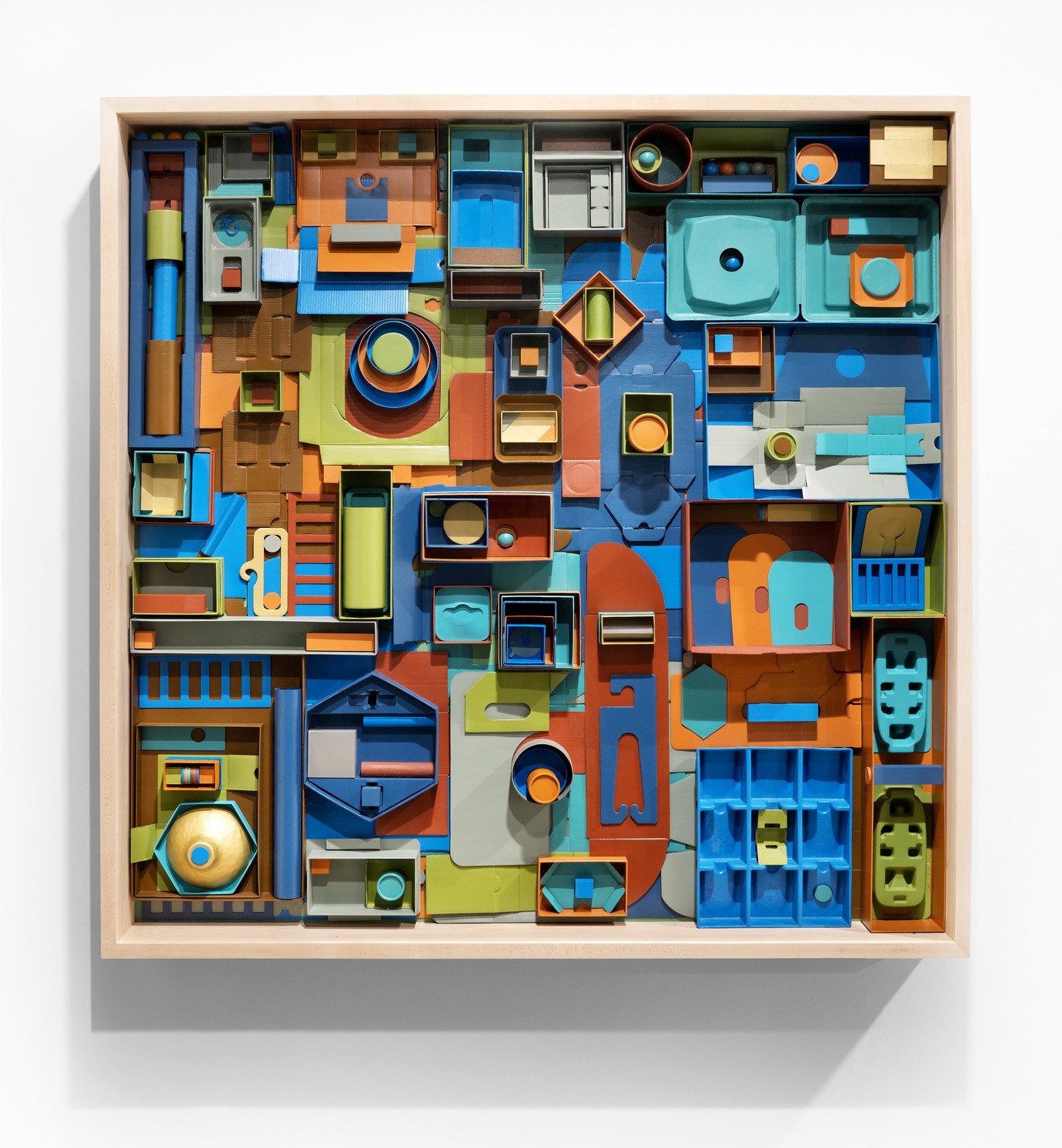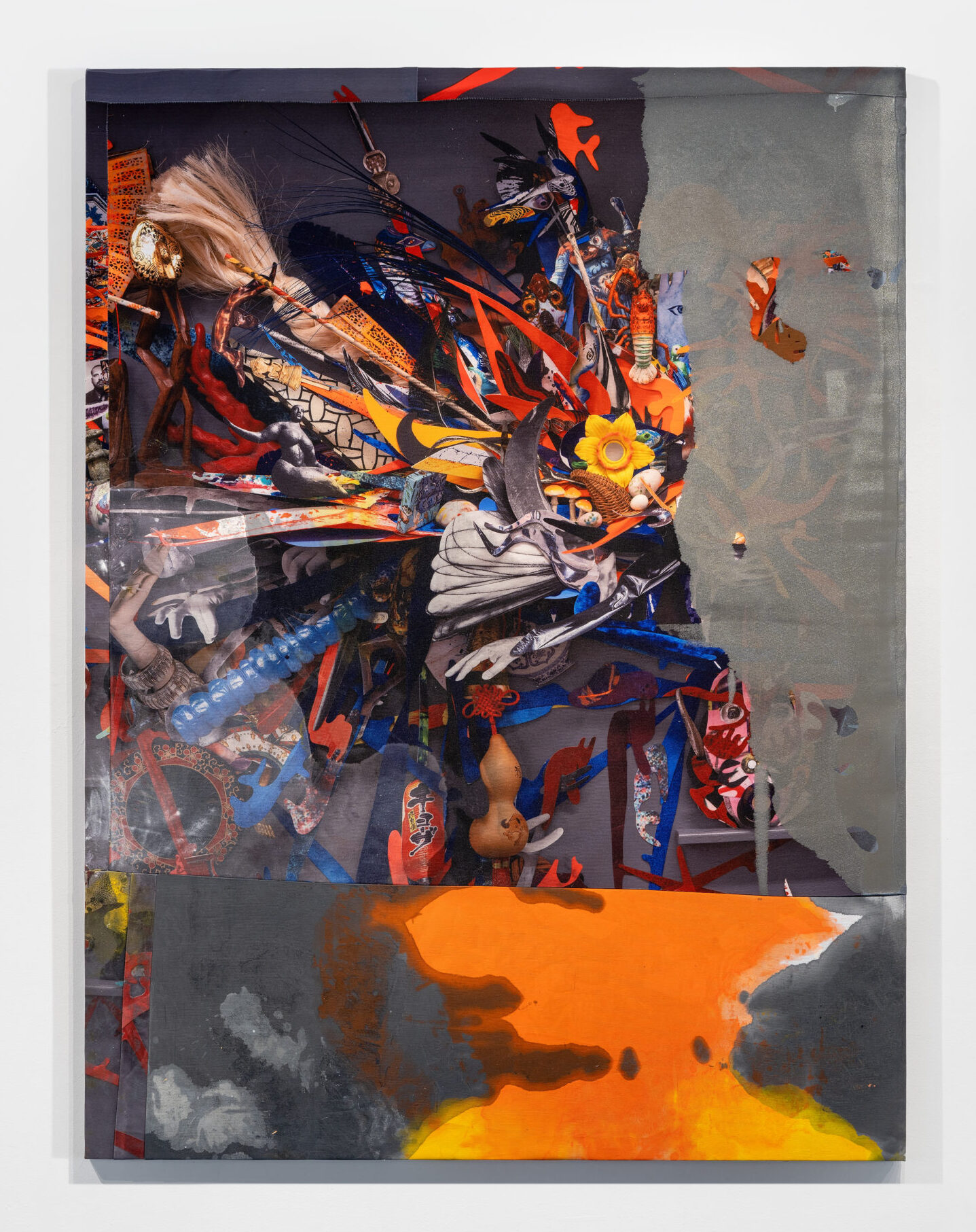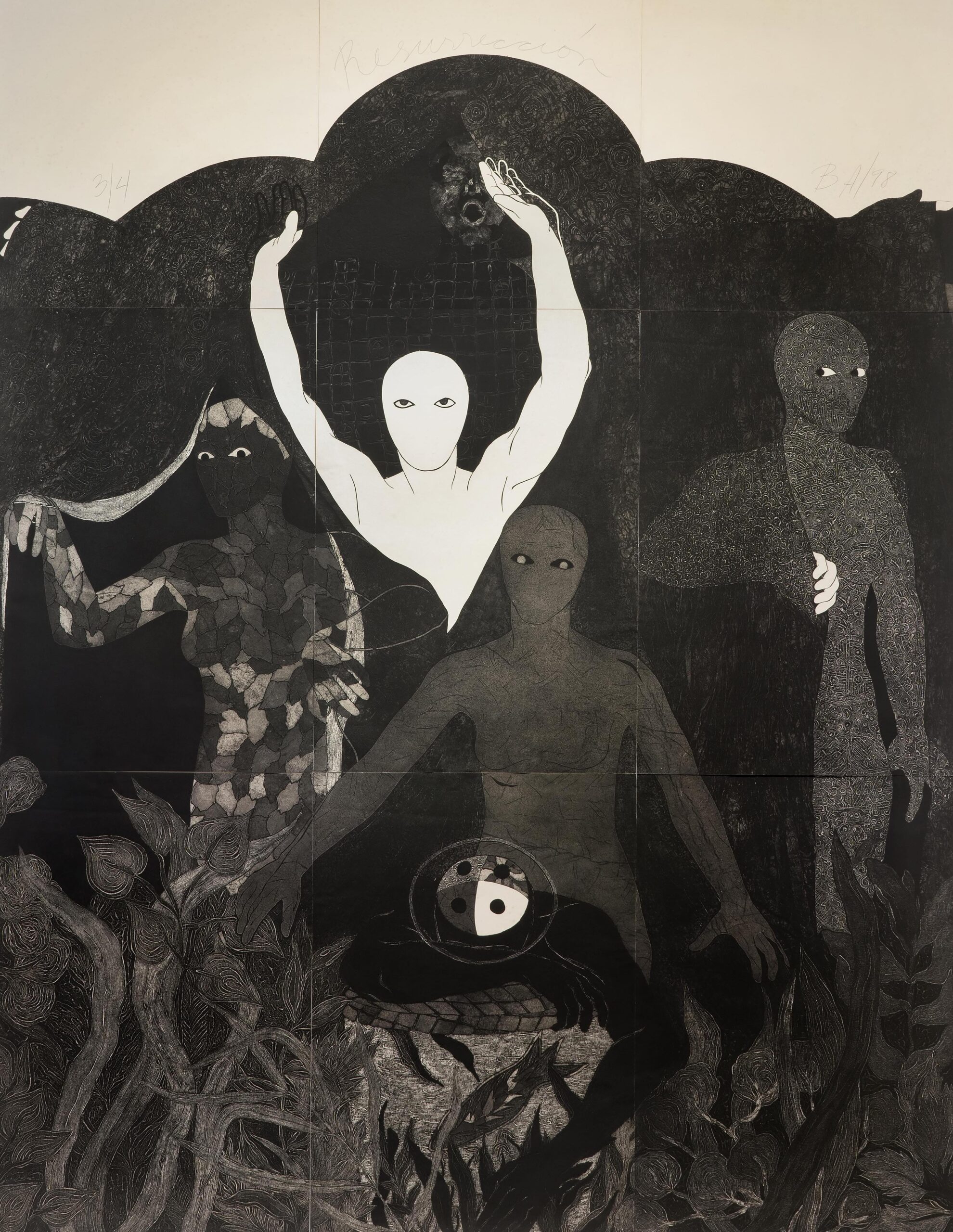Art Basel Miami Beach
December 2 - December 5, 2021
Entrance:
Washington Avenue Hall C
Booth H13
For Art Basel Miami Beach 2021, David Castillo proudly presents a selection of works by gallery artists across three sectors of the fair: Galleries, Kabinett, and Meridians.
For the Galleries sector, David Castillo exhibits a selection of paintings, works on paper, photographs, assemblages, and ceramic sculptures by artists Sanford Biggers, Lyle Ashton Harris, Quisqueya Henriquez, Pepe Mar, Xaviera Simmons, Shinique Smith, Vaughn Spann, and Yesiyu Zhao.
Across the works on view, past, present, and future are flattened into one continuous and singular moment that reflexively borrows from and aspires towards itself. The artists represented in the booth watch time unfold as a cycle where patterns appear and reappear along the strictures of history, repeating as they have before, as they do now, and as they will into the future. The works overlay these rhythms of time over one another, curling history in on itself to reveal unexpected linkages between the future we anticipate, and the near and far pasts that have already come to fruition, and the moment that is lived now.
Sanford Biggers’ ceramic sculptures—first exhibited in David Castillo’s 2019 Art Basel Miami Beach Galleries presentation—visually translate the geometries that permeate the artist’s practice onto the surfaces of hand painted tiles. Biggers’s language of patchworked quilt patterns, and of forms that nod to the intricate folding of origami, become reimagined beyond the malleability of textile and paper and into material permanences to last the test of time. These works enter Biggers’s practice in dialogue with history: ceramics that have survived from antiquity into the present. Those artifacts carry with them the stories of their age; and Biggers’s ceramics, by extension, will carry the narratives of ours into the future.
Lyle Ashton Harris’ works piece together photographs, ephemera, and objects collected along the course of his storied life and career. Charting a biographical trajectory marked by the people, places, and times through which the artist acquired these personal effects, the works take form as exuberant assemblages—where these personal histories are collaged and layered together in complex arrangements—that the artist calls his Shadow Works. These pieces bring diverse threads from Harris’s past and practice into contact, presenting an image of the artist as he once was, as he is now, and as he will be, together in a singular snapshot of Harris.
In her conceptual practice, Quisqueya Henriquez reframes the canons of art history and its overlooked figures, as well as those of turning fashion cycles and luxury goods, to appropriate into her works visual relationships that bring into question the modes and practices of those fields. In her works, she challenges the telling of history—how it has been written and remembered, the ways in which it has been taught and learned—by pairing well-established and canonical forms within newer contexts. In her Obsessions series, she ambiguates forms prevalent within consumer goods and traces them to their antecedents within the history of art.
Pepe Mar looks to the fifteen-year timeline of his own career as a material to be readily borrowed, recontextualized, and transformed within his own practice. Images taken from the archive of his past works are printed onto textile swathes that are then cut apart, recombined, and sewn together, bringing pieces from different periods of his practice into contact. His assemblages do similar work with the histories of art and of museological display: in vast cabinets of curiosities, Mar collages objects, clothing, and ephemera that he collects from second-hand stores, flattening the aesthetic and historical hierarchies between these elements in arrangements that approach museum exhibition displays taken to visual extremes.
Xaviera Simmons looks back along the history of the landscape genre—one dominated by symbolic narratives that conflate nature with myths of divine intervention or nationalist exceptionalism—to re-delineate and define the visual modes along which images of the natural environment have been codified. She deconstructs these conventions, inserting characters within their logic and in works where through pieces of language—written together in clipped phrases or associative terms—engenders an impression of a landscape. Through her practice, Simmons brings the past of the landscape genre crashing into conversation with the present.
Shinique Smith breathes personal subjectivities into evocative, swirling abstractions that capture within them aspects of the artist’s life: untold stories, personal effects, memories of youth, or histories that have informed her practice in some way. In circulations of color and shape, the artist creates gusts of personal narrative that breeze across and beyond the canvas, bringing intimate pasts into contact with the present. Ambrosia tells of nostalgia, of sweet memories to be savored and carried forward in time.
In his richly layered painterly vocabulary, Vaughn Spann questions the longstanding meanings encoded within symbols that have permeated history. His pieces complicate and create novel, layered associations within frameworks of visual and cultural understanding. In his Dalmatian series, the artist plays with spotted patterns and forms to communicate a personal mythology—devised by the artist as a young boy—whereby he links the American dream itself to ownership of a Dalmatian. This childhood fantasy, one informed by the picturesque and middle-class lives modeled by white families in popular sit-coms, is ultimately grounded in reality: systemic socioeconomic disparities divided along racial lines.
Yesiyu Zhao paints vibrant scenes that call to popular tropes from traditional Chinese genre painting and folklore, inserting into them visual aspects of the artist’s personal experience. These elements subtly destabilize the scenes with elements—like muscled characters with hairy legs, fishnet stockings, and high heels—that only appear out of place upon closer viewing. These works grant visibility to gender expressions beyond the binary of feminine and masculine, affirming their existence well before and beyond our current era.
Together, these artworks ask their viewers to consider time as a resource that fuels its own consumption, understanding, and codification; as history is written (and rewritten anew) it is the duty of its bearers to question its trajectory: where it came from and where it is headed from here.
Kabinett
Belkis Ayón: My Vernicle
For the Art Basel Miami Beach 2021 Kabinett sector, David Castillo presents Belkis Ayón: My Vernicle, an exhibition of works by the late Cuban artist.
Over the course of her short life, Ayón realized a distinct body of printed masterworks that unfold across a symbolic language of richly patterned scenes, spectral entities, and a penumbral magic that overlays the artist’s visual storytelling. At the center of Ayón’s practice are the sacred mythologies, ceremonies, and figures of the Abakuá—a secret, Afro-Cuban society and belief system that welcomes only men and whose practices are largely known only to its male initiates. Sikán, the religion’s central figure and the only woman represented in its pantheon, serves as the artist’s point of identification and departure, whose story forms the basis of Ayón’s work as a woman interested in the forbidden iconographies of this fraternal order. Focused almost entirely on the Abakuá and their beliefs, Ayón remains to date the only internationally-recognized artist to have created a comprehensive body of work about the society.
Belkis Ayón: My Vernicle presents four important late-career collographs by the artist, a series of circular and irregularly-shaped works created for the last exhibition prior to Ayón’s death. These works, all titled with the phrase My Vernicle…, mark a point of synthesis in Ayón’s practice where the allegorical retellings of Sikán’s mythology become autobiographical in nature, infused with the artist’s own personal experiences; they reflect Ayón as much as they do Sikán.
The Art Basel Miami Beach Kabinett sector is a platform for curated presentations of significant art historical material.
Meridians
Vaughn Spann: Rover
Vaughn Spann’s powerfully evocative paintings synthesize abstract textures and forms into compositions charged by familiar symbols and the changing meanings carried within them. Spann redefines our relationships to various motifs and archetypes—rainbows, the X, and others—and, through them, insinuates the fraught and at times violent social realities that underlie life.
For Meridians, curated by Magalí Arriola, Spann presents a monumental work from his Dalmatian series—the first created at this immense scale. Bearing patterns that resemble the dog breed’s spotted coat, Spann’s Dalmatian Paintings allude to the artist’s childhood aspirations of living the ideal American life modeled by families on TV shows and movies; an economic and racial fantasy that for the artist, at this young age, was represented by households that keep Dalmatians as pets. The work examines socioeconomic signifiers of the American Dream and how they are often divided along racial lines.
Rover is presented jointly between David Castillo and Almine Rech in Meridians, Art Basel Miami Beach’s sector dedicated to large-scale artists’ projects.










































